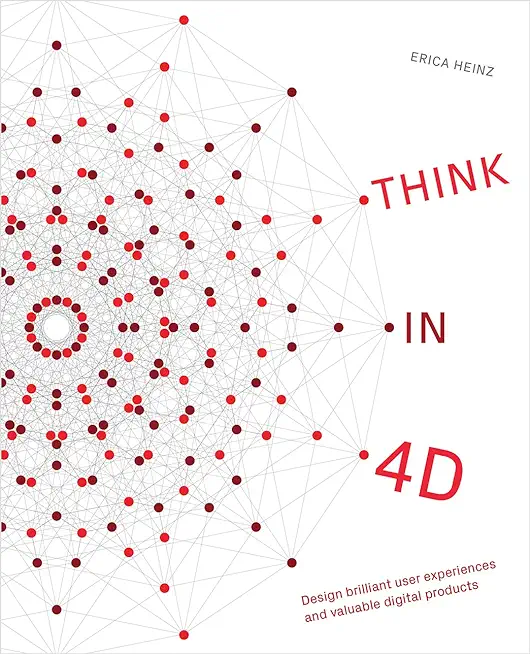Think in 4D: Design brilliant user experiences and valuable digital products

Huge savings for students
Each student receives a 50% discount off of most books in the HSG Book Store. During class, please ask the instructor about purchase details.| List Price: | $59.00 |
| Price: | $29.50 |
| You Save: | $29.50 |
book about product experience design: how to think holistically, creatively, and critically to create savvy, successful sites and apps. It pushes the tech industry to think beyond 2D designs and 3D experiences to 4D impacts. More than 500 illustrations, 40 exercises, and a bonus collection of free templates help any student, professional, or entrepreneur level up.
Erica Heinz shares evergreen principles and refined methods drawn from 20 years of experience as a digital design consultant in New York City plus a variety of undergraduate and graduate design courses. Think in 4D unites behavioral psychology, business strategy, visual principles, research methods, and human-centered design practices to provide a pithy, visual cheat sheet for hundreds of design ideas and an essential handbook for any digital citizen.
- Part I, FRAMEWORK outlines the easy-to-remember 4D thinking model. Four phases (threads, impressions, interactions, and memories) and three dimensions (2D, 3D, and 4D) split the complexity of digital product design into manageable yet integrated parts. The method has seven key tenets - prototype, lower the fidelity, work backwards, work in circles, use principles, use metrics, and co-create - that focus and speed work.
- Part II, PRACTICE, provides guidelines for putting the model into action. The four phases and three layers yield twelve chapters spanning 2D (words, layouts, symbols, and images), 3D (inclusivity, flexibility, usability, and personalization), and 4D (relationships, patterns, paths, and moments) focus areas. Each chapter includes key questions, cognitive principles, examples, exercises, and user research tips. Each phase ends with a larger design challenge and critique outline for a key deliverable (concepts, flows, screens, or links).
- Part III, CRAFT, refines the practice with ways to advance both creative and conceptual skills. Prototyping is the tangible craft, so the book shares ways to sketch, wireframe, and play more effectively. Thinking is the invisible craft, so the book shows readers how to deconstruct, frame, research, diverge, converge, differentiate, and think in 4D.
Jubilee Bridges
